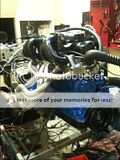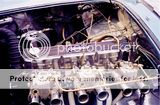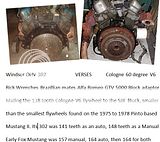
You want to say no to something more like this ^, a head design which makes in excess of 235 flywheel hp with the most basic Holley or Motorcraft/Autolite carbuartion on a 3.3 liter 200 cube engine. But head flow at 0.510" is 218cfm@28"H2O which, according to the usual calculators, that is 336hp potential with ease.
But a propane 250 cube 4. 1 liter engine, made 240hp@5200rpm at the flywheel with 280 lb/ft flat around 3500rpm with this set up, and 11.2:1 compression and a custom hydraulic cam 285/292 with 230/237@0.050 and 0.510/0.530 lift, 112LSA
the LPG manifold 73GreenMachine has made is perfect for an F150 4.9 EFI throttle body, eliminating the hood clearance issues.
http://fordsix.com/forum/viewtopic.php?f=48&t=65701&p=504490#p504490


And on a turbo charged 250's, like Georges old Crossflow, his F150 4.9 EFI twin bore throttle body got him into the 10's.

And you want to go to all these requirement to fit an inferior cross flow head. 52 pounds less is not worth it whn it pacakages so much better and has ther superior FE shaft valve gear.
Even the iron head gas flowed would out do a cross flow, for a lot less effort. Cross flow heads are no better than the Classic Inlines head and require massive block and head mods and an Australian cam, header, intake and they are not emmission compliant in some states.
http://www.classicinlines.com/images/Te ... xflow2.JPG
http://www.classicinlines.com/XFheadswap.asp




























